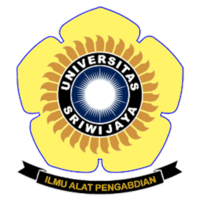Penggunaan Lahan di Sekitar Mangrove untuk Pengelolaan Lingkungan Berkelanjutan di Kecamatan Tugu Semarang
Abstract
Siahaan IN, Wasiq J, Kismartini K. 2020. Management of land use around mangroves for sustainable management of Semarang's coastal environment. In: Herlinda S et al. (Eds.), Prosiding Seminar Nasional Lahan Suboptimal ke-8 Tahun 2020, Palembang 20 Oktober 2020. pp. xx. Palembang: Penerbit & Percetakan Universitas Sriwijaya (UNSRI).
One of the ecosystems in coastal area is mangrove ecosystem. Mangrove forests, which have the main function of preventing abrasion, wind protection, preventing sea water intrusion, and as an energy producer, have been converted into non-forest land in recent years, such as agriculture and fisheries. The coast of Semarang has mangrove ecosystem whose condition has been experiencing extensive degradation, due to abrasion and changes in land use. The purpose of this study is to determine the use of land around mangroves with changes in mangrove area in the Tugu District, Semarang. The method used in this research is descriptive research method. The data collection technique used was study of literature. The results showed that the coastal land area in Semarang City was 9,111.28 Ha (47.6%) and the water area was 10,048.80 Ha (52.4%). The area of mangroves in Tugu District currently reaches 48.2 Ha of the total mangrove area in Semarang City is 96.4 Ha. The area of land is dominated by ponds, rice fields, settlements and industry. The location of the mangrove forest has undergone conversion of mangroves into ponds, resulting in abrasion and disrupting people's livelihoods. This situation makes mangroves in vulnerable position, because the land can change its function at any time. On the other hand, some people depend for their livelihoods as fish farmers. Mangrove rehabilitation efforts as a sustainable environmental management effort must be made to improve Semarang's coast, both by the government and the community.
One of the ecosystems in coastal area is mangrove ecosystem. Mangrove forests, which have the main function of preventing abrasion, wind protection, preventing sea water intrusion, and as an energy producer, have been converted into non-forest land in recent years, such as agriculture and fisheries. The coast of Semarang has mangrove ecosystem whose condition has been experiencing extensive degradation, due to abrasion and changes in land use. The purpose of this study is to determine the use of land around mangroves with changes in mangrove area in the Tugu District, Semarang. The method used in this research is descriptive research method. The data collection technique used was study of literature. The results showed that the coastal land area in Semarang City was 9,111.28 Ha (47.6%) and the water area was 10,048.80 Ha (52.4%). The area of mangroves in Tugu District currently reaches 48.2 Ha of the total mangrove area in Semarang City is 96.4 Ha. The area of land is dominated by ponds, rice fields, settlements and industry. The location of the mangrove forest has undergone conversion of mangroves into ponds, resulting in abrasion and disrupting people's livelihoods. This situation makes mangroves in vulnerable position, because the land can change its function at any time. On the other hand, some people depend for their livelihoods as fish farmers. Mangrove rehabilitation efforts as a sustainable environmental management effort must be made to improve Semarang's coast, both by the government and the community.
Keywords
mangroves, environmental management, land use
Full Text:
PDFArticle Metrics
Abstract view : 457 timesPDF - 1015 times
Refbacks
- There are currently no refbacks.

